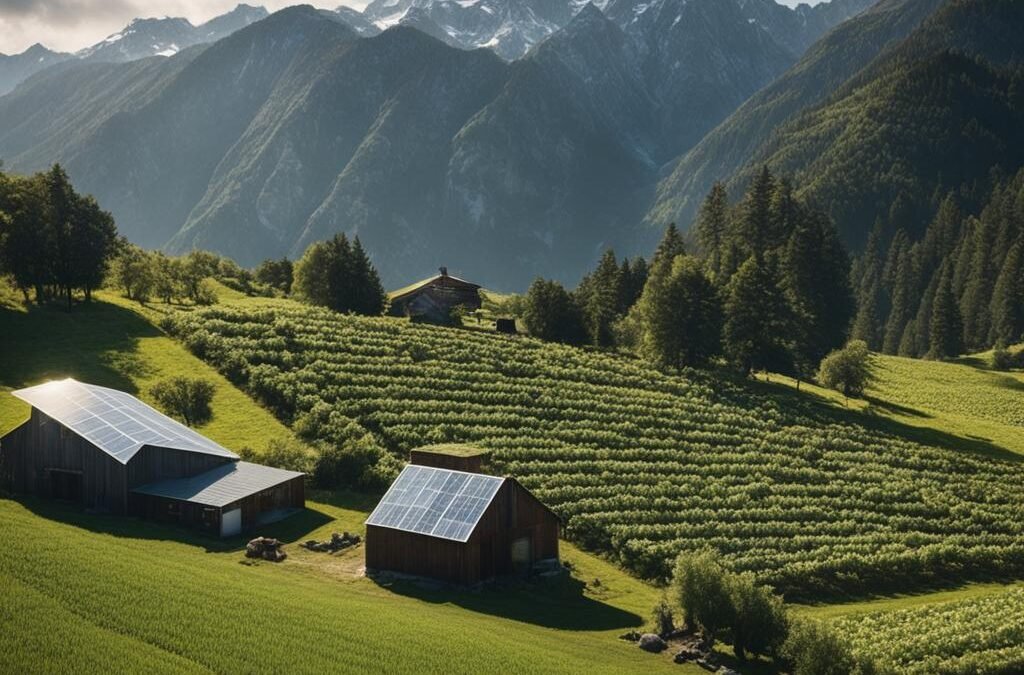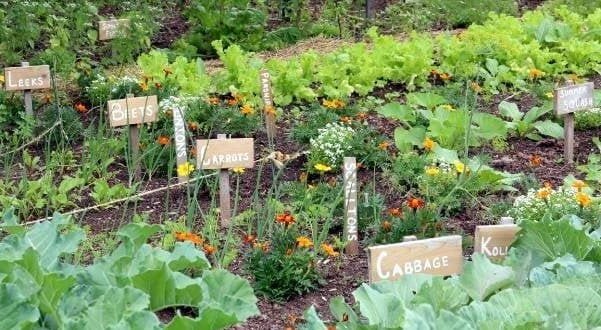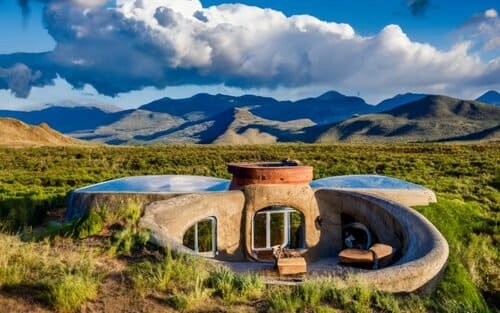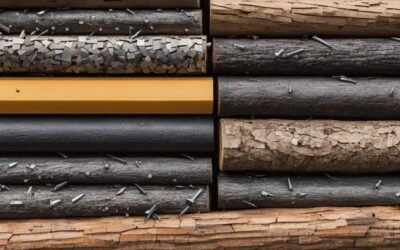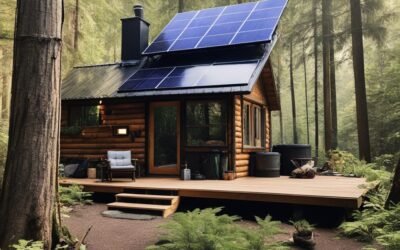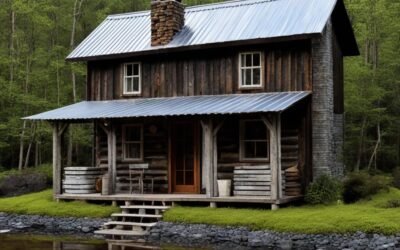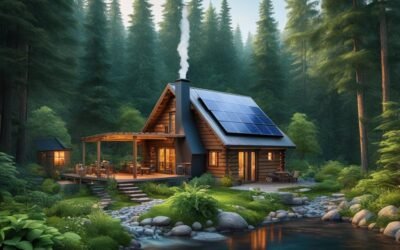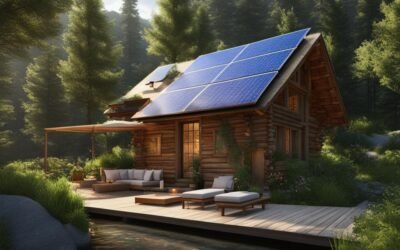As I venture deeper into the realm of self-sufficient living, one question stands pivotal: how much land do you need to be self sufficient? It’s a topic that taps into the heart of sustainability, and lately, it sparks more interest as we collectively shift toward mindful living. Calculating the perfect land size for self sufficiency isn’t just about numbers—it’s about considering the intricacies of our dietary habits, energy consumption, and personal goals for a self-sustainable lifestyle.
The drive to be in tune with the land runs deep in my veins, and if you’re contemplating a self sustaining land size for your homestead, know that it’s more attainable than one might think. For instance, when it comes to housing and energy, I found that even with the average U.S. roof size, implementing solar panels on merely 375 sq. ft. can harness a year’s worth of electricity. Adapting a vegetarian diet for a family of four would require approximately 76,666 sq. ft., and by integrating livestock, the self sufficient homestead land size expands slightly. Homesteaders like Rick Austin remind us that a profound connection with a few acres can weave the fabric of a self sustainable land acreage.
Let’s embark on a journey to decode land needed for self sufficiency and the land area for self sufficiency that resonates with my aspirations, and potentially yours, for a greener tomorrow.
Key Takeaways
- Understanding the land size for sustainable living hinges on our lifestyle choices and aspirations.
- Small land areas can yield significant energy output with solar technology.
- Vegetarian diets require less land, signaling a practical route to self-sufficiency.
- Including animal products in our diet increases the self sufficient homestead land size, yet it’s manageable.
- Real-life examples offer insights and inspiration for potential homesteaders assessing land size for self sufficiency.
- The journey to self-sufficiency is a personalized experience, highly dependent on the individual’s goals and environmental factors.
- Innovative approaches and efficient use of space can maximize self sustaining land size productivity.
Understanding Self-Sufficient Living and Land Requirements
In my journey towards a self-sufficient lifestyle, I’ve realized that land is more than just a parcel of dirt—it’s the foundation for self-reliance on your homestead. The dream is about sustainability; relying less on supermarkets and utility companies, and more on the land and my abilities. Let’s dive into what it really means to live off the land and how much nature’s bounty is required to achieve this fulfilling lifestyle.
What Does It Mean to Be Self-Sufficient?
Living a self-sufficient life means reducing dependency on external resources to meet basic needs. It’s a way of life where you proactively take charge of your food, shelter, and energy. For me, it’s the freedom to make choices that are healthier for my family and the planet. I grow my own vegetables, utilize renewable energy, and manage waste sustainably, all contributing to a self-sustainable living situation that’s flexible and rewarding.
The Role of Land in Self-Sufficient Living
The link between the land and self-sufficiency can’t be overstated. From the food on my table to the wood that builds my shelter, everything comes from my land. A larger plot allows for a bigger scope of self-sufficiency, but even small areas can yield impressive results with the right approach. Above all, any successful homestead focuses on the effective and efficient use of its land.
Factors Influencing the Amount of Land Needed
Several considerations factor into determining self sufficiency land requirements. For instance, my dietary choices heavily influence how much land I cultivate. A meat-inclusive diet needs space for livestock, while a plant-based regimen can require less land. It’s not just about the square footage; it’s about how smartly that space is used and the productivity it can yield.
| Dietary Preference | Land Required | Comments |
|---|---|---|
| Vegetarian | 1/5 to 1 acre | Depending on crop choices and gardening techniques |
| Mixed (includes livestock) | 2 to 5+ acres | Varies with types of animals and their needs |
| Energy Self-Sufficiency | Varies | Depends on renewable resources available e.g. solar, wind |
Climate is another game-changer. My homestead, located in a temperate region, demands different strategies than one in a tropical climate where growing seasons are longer and crop variety is broader. Last but not least, my goal of complete self-reliance shapes land use. I need enough land not just to subsist, but to thrive, providing all the necessities for my family without external inputs.
As I stand amid the green expanse that I call home, it’s clear that self-sufficiency isn’t just a way to live—it’s a path to freedom. And the land, with all its self sufficiency land requirements, is the canvas on which this beautiful and self-reliant life is painted.
Assessing Your Self-Sufficiency Goals and Needs
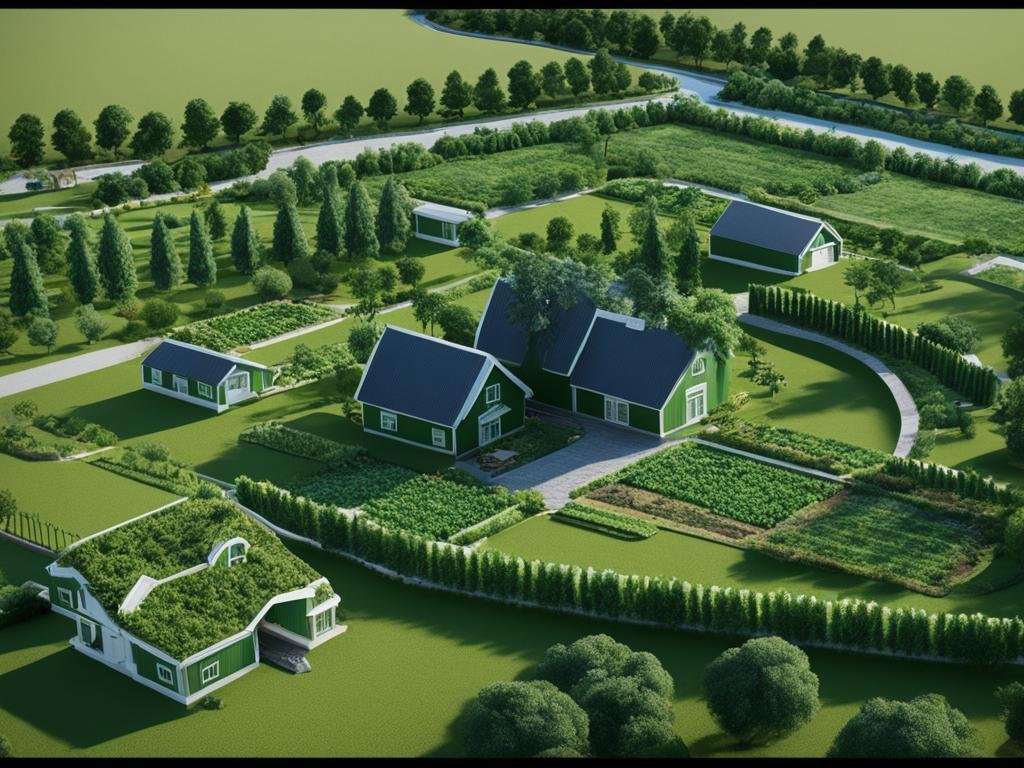 When I embark on the quest for a self-sufficient lifestyle, it’s crucial for me to anchor my dreams in reality. The acreage I require heavily depends on how I envision my day-to-day living, my food sources, and the environmental realities of my location. Let’s delve deeper into setting achievable goals, understanding how dietary preferences and climate shape our homesteading needs.
When I embark on the quest for a self-sufficient lifestyle, it’s crucial for me to anchor my dreams in reality. The acreage I require heavily depends on how I envision my day-to-day living, my food sources, and the environmental realities of my location. Let’s delve deeper into setting achievable goals, understanding how dietary preferences and climate shape our homesteading needs.
Setting Realistic Self-Sufficient Living Goals
Dreaming big is the catalyst for action, but I must chart my course realistically. Achieving self-sufficiency doesn’t happen overnight. It requires meticulous planning, a clear understanding of the resources at my disposal, and a readiness to adapt. My goals should reflect the land size available for sustainable living and be achievable within my means and skillset.
Evaluating Your Dietary Preferences and Needs
The foods I love and need play a pivotal role in determining the land size for sustainable living. If my palate favors a plant-based regimen, I might not need as much space compared to maintaining a diet that includes meat and dairy. Let’s look at estimated land requirements based on various dietary choices:
| Dietary Choice | Estimated Land Required |
|---|---|
| Vegetarian | 1 acre per person/year |
| Omnivorous (with small livestock) | 2-3 acres per person/year |
| Omnivorous (with larger livestock) | 3+ acres per person/year |
Considering Your Climate and Environment
The climate I live in greatly influences my ability to grow and sustain a variety of crops. In tropical environments where quick vegetation growth is possible, I might require less land compared to areas with harsher weather conditions. Also, incorporating areas for fuel production affects my overall land use, particularly for cooking and heating needs, which must align with my climate considerations for homesteading.
Every aspect, from soil fertility to local wildlife, can impact my self-sufficient homestead. By factoring in dietary preferences and climate into my self-sufficient lifestyle goals, I can craft a robust plan that grows alongside me.
Gauging the Size: How Much Land Do You Need to Be Self Sufficient
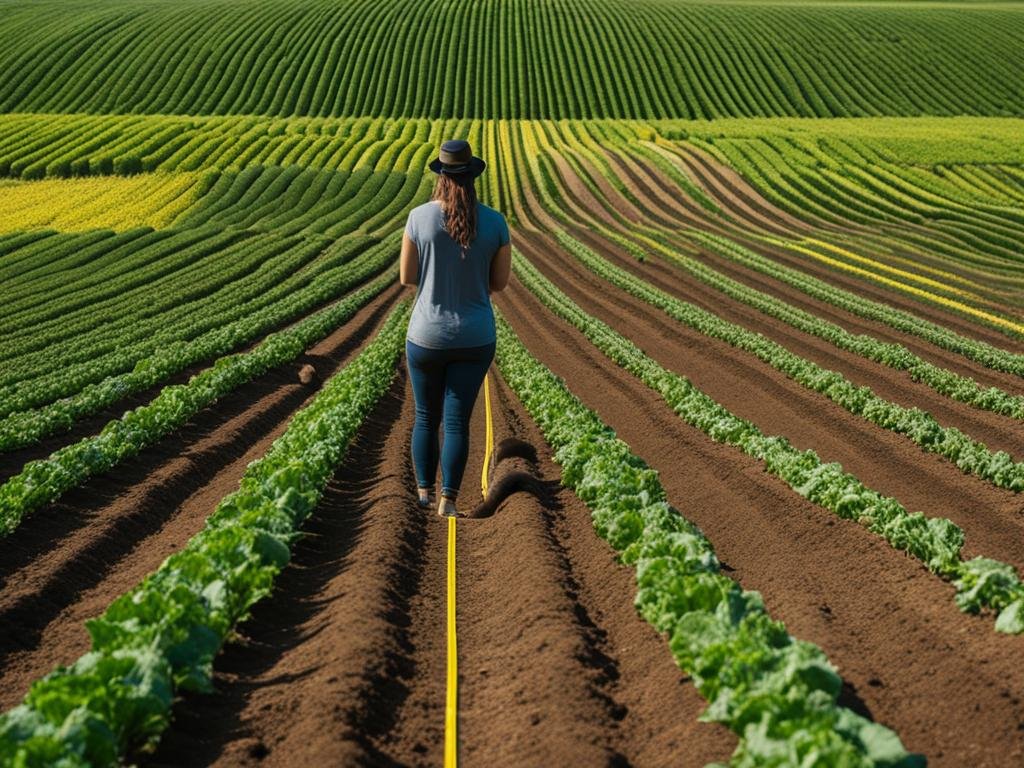 As we embark on the quest for self-sufficiency, a question often arises: “How much land do I really need to maintain a lifestyle that’s both sustainable and fulfilling?” Whether it’s for those leaning towards a plant-based diet or ones preferring a mixed-diet that includes livestock, meticulously calculating land size is paramount. Let’s break it down, shall we?
As we embark on the quest for self-sufficiency, a question often arises: “How much land do I really need to maintain a lifestyle that’s both sustainable and fulfilling?” Whether it’s for those leaning towards a plant-based diet or ones preferring a mixed-diet that includes livestock, meticulously calculating land size is paramount. Let’s break it down, shall we?
Calculating Land Size for Plant-Based Diets
In my journey, I’ve found that the shift towards plant-based self sufficiency requires a strategic approach. For an individual, approximately .44 acres is the sweet spot to produce enough calories from a garden rich in vegetables, fruits, and grains. But let’s not stop there. Visualizing this, imagine an almost half-acre plot brimming with edible plants—a personal haven of health and sustainability.
If you’re crunching numbers for a family, the scenario scales up. A nutritious diet that supports an average daily intake of 2300 calories per person is attainable on this modest tract of land. However, a blend of intricate planning and an understanding of seasonal growth patterns is indispensable.
Calculating Land Size for Mixed Diets Including Livestock
Adding livestock into the mix instantaneously amplifies the equation. Integrating animals means not only considering their living space but also the crop land to feed them. For instance, my calculations include around 207 sq. ft. for meat, 100 sq. ft. for dairy, and 65 sq. ft. for eggs to comfortably feed a family of four seeking mixed-diet land requirements.
A breakdown is useful here: we need ample space for pigs, goats, and hens which expands beyond mere shelter—pasture for grazing and space for movement is vital for their well-being and, consequently, the quality of food they provide us.
Energy Production and Self-Sufficiency
Moving beyond sustenance, energy self-sufficiency is a cornerstone of the self-reliant lifestyle. With technological strides in solar power, I’ve discovered that roughly 375 sq. ft. of properly placed solar panels on a roof is sufficient to harness a year’s worth of electricity for a typical household.
To encapsulate, whether you’re painting your plate green with a lush array of vegetables and grains, or enriching it with home-raised poultry and dairy, the canvas of your land can sustainably support your dietary choices. And let’s not forget the empowering beam of energy self-sufficiency gleaming from the rooftops, keeping our modern amenities aglow. It’s a delicate balance, yes, but one that paves the way to a self-sufficient utopia. Bear in mind, every step taken towards understanding and calculating land size is a stride towards a self-sustained existence.
Maximizing Land Use through Sustainable Practices
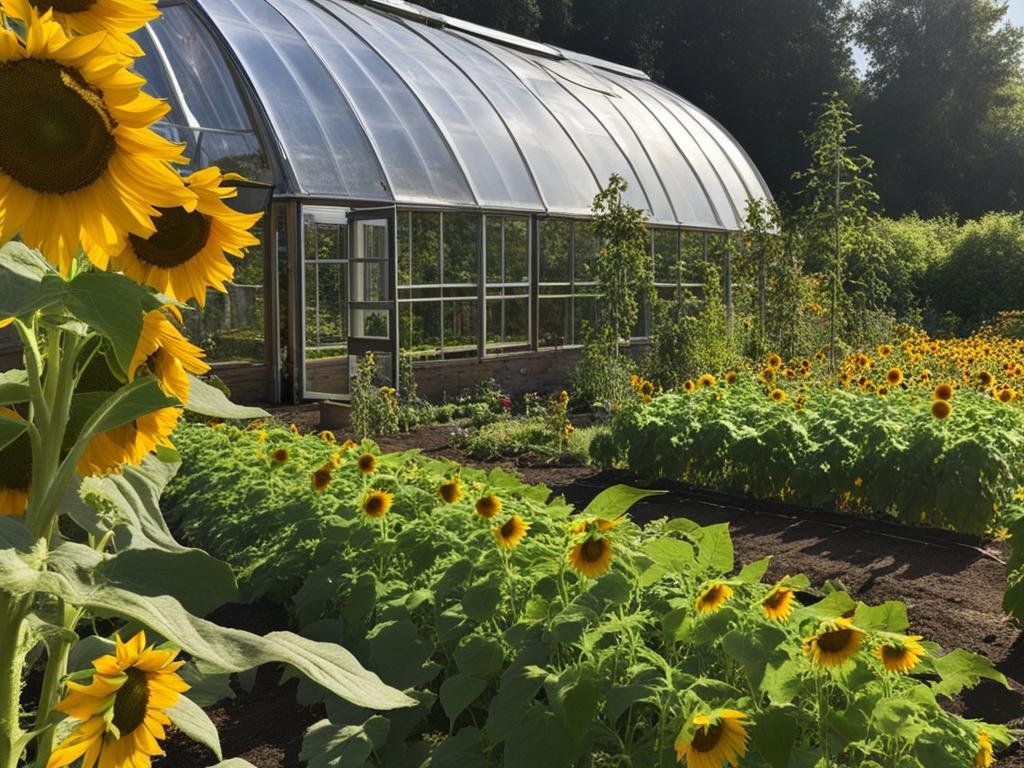 As someone who’s deeply invested in eco-friendly homesteading, I know firsthand that adopting sustainable practices is not just good for the Earth – it’s savvy land management, too. Maximizing land use doesn’t require an immense acreage; rather, it’s about leveraging every square foot with self sufficient land utilization. Let’s explore how we can turn even modest plots into abundant sources of nourishment and energy.
As someone who’s deeply invested in eco-friendly homesteading, I know firsthand that adopting sustainable practices is not just good for the Earth – it’s savvy land management, too. Maximizing land use doesn’t require an immense acreage; rather, it’s about leveraging every square foot with self sufficient land utilization. Let’s explore how we can turn even modest plots into abundant sources of nourishment and energy.
One of the keys to transforming your land into an efficient space is leveraging permaculture principles. This doesn’t just mean planting a variety of crops; it’s about creating an interconnected system where each element supports another. Imagine a food forest where the canopy, shrub layer, and ground cover all thrive in harmony, reducing the need for external inputs and maximizing the productivity of the space.
- Permaculture designs mimic natural ecosystems
- Each element serves multiple functions
- Biointensive gardening maximizes yields
Biointensive gardening is another game-changer. By growing upwards, we use vertical space to increase yield—trellising beans, cucumbers, and even certain types of squash. It’s not just about growing up, though; we also need to think deep. Double-dug beds allow roots to penetrate the soil more extensively, accessing nutrients and water below the standard till depth and minimizing space usage.
| Technique | Description | Benefits |
|---|---|---|
| Permaculture | Design principles for sustainable land use | Increases biodiversity and self-sustainability |
| Biointensive Gardening | Intensive planting and soil preparation that focuses on maximum yield | Enhances productivity per square foot |
| Urban Farming | Small scale agriculture within urban environments | Utilizes otherwise neglected spaces effectively |
Also, don’t overlook the role small spaces can play in maximizing land use. Urban farming shows that you can produce an abundance of food in a limited area. Rooftop gardens, balcony containers, and community plots are powerful examples of high-density, productive spaces that contribute to a more self-sufficient community.
Remember, sustainable living isn’t about the land you have; it’s about how you use it.
In conclusion, it’s evident that by using the right techniques, we can make the most out of every inch of our land. Whether it’s a sprawling homestead or a compact urban garden, adopting sustainable practices like permaculture, biointensive gardening, and creative urban farming can revolutionize our approach to homesteading. For me, the beauty of eco-friendly homesteading lies not just in its ideals, but in the tangible reality of brimming garden beds and a well-stocked pantry, achieved through ingenuity and smart design.
Real-Life Examples of Self-Sufficient Homesteads
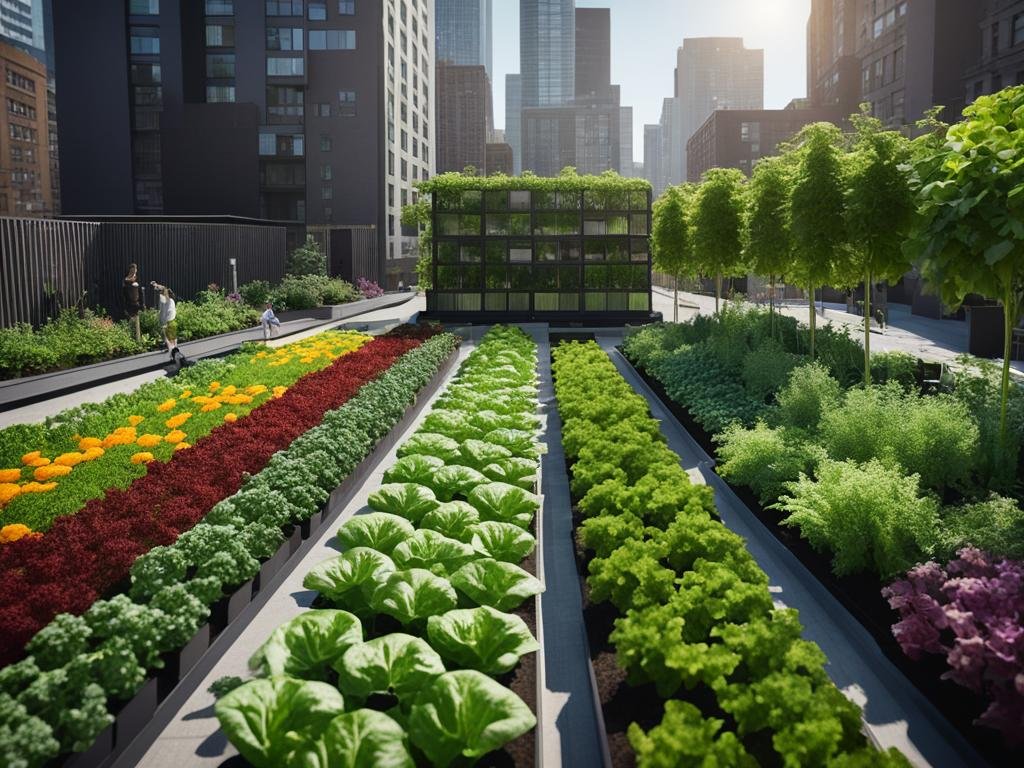 As someone deeply interested in the sustainable living movement, I’m continually in awe of the astonishing self-sufficient homestead examples that have sprouted up across the nation. These successes not only inspire but provide a practical blueprint for what can be achieved with dedication and innovative thinking, even within the confines of an urban setting.
As someone deeply interested in the sustainable living movement, I’m continually in awe of the astonishing self-sufficient homestead examples that have sprouted up across the nation. These successes not only inspire but provide a practical blueprint for what can be achieved with dedication and innovative thinking, even within the confines of an urban setting.
Small-Scale Urban Success Stories
Consider the story of Growing Power in Milwaukee, a beacon of urban farming success. On a modest 2-acre urban lot, they’ve managed to produce over a million pounds of food on an annual basis. Not too far from there, The Urban Homestead in Pasadena, California stands as a testament to high-yield small-scale farming, delivering a substantial portion of the family’s food needs and income from just a fifth of an acre. These examples shatter the myth that one requires vast swaths of land for fruitful farming.
Innovative Farming Techniques in Limited Spaces
The capabilities of biointensive gardening shine in these urban oases. Such methods show that space limitations don’t necessarily limit potential. Instead, they demand innovation. By maximizing every inch of soil, small plots become surprisingly productive, proving that through meticulous planning and technique, even a modest backyard can transform into a food production powerhouse.
The Impact of Permaculture and Biointensive Methods
Furthermore, permaculture benefits are clearly evident at places like Singing Frogs Farm in Sebastopol, California. Their approach integrates diverse crops with livestock, focusing on building soil health and biodiversity, ultimately leading to a farm that doesn’t just sustain itself but regenerates the environment. Their success is a vivid demonstration of how permaculture principles can be applied to create a thriving, self-renewing ecosystem that supports robust self-sufficiency.
Conclusion
Embarking on a sustainable living journey is as personal as it is profound. As I’ve explored throughout this article, achieving self-sufficiency is not a one-size-fits-all endeavor. It takes careful homestead planning, attentiveness to one’s own dietary preferences, environmental parameters, and a deeply rooted commitment to living in harmony with the land. The dream of self sufficient lifestyle fulfillment is attainable, whether one resides on a half-acre suburban plot or sprawls over several rolling acres.
By integrating permaculture and biointensive gardening principles, the efficiency of any given space can be significantly elevated. These approaches not merely boost production but also ensure that our interaction with nature remains respectful and renewable. The success stories I’ve mentioned serve as testament and inspiration, showcasing that whether in an urban setting or rural expanses, a regenerative, abundant lifestyle is achievable.
In the essence of true self-reliance, the capacity to adapt and innovate is crucial. My journey to self-sufficiency may differ from yours, but the underlying principles guide us towards a shared vision. It’s a path marked by learning, growth, and the joy of reaping what we sow on our slice of Earth. No matter the size of our land, by embracing these sustainable practices, we step towards a life rich in autonomy and in tune with the rhythms of the natural world.
Real-Life Examples of Self-Sufficient Homesteads
What Does It Mean to Be Self-Sufficient?
Being self-sufficient means living a lifestyle that is reliant as little as possible on external resources. It encompasses producing your own food, managing waste, generating energy, and being able to sustain your household with minimal impact on the environment.
The Role of Land in Self-Sufficient Living
Land is the cornerstone of self-sufficient living. It provides space for growing food, raising livestock, harvesting timber for building, collecting rainwater, and potentially generating renewable energy. The amount of land you have influences the extent to which you can truly be self-reliant.
Factors Influencing the Amount of Land Needed
Several factors affect land size needs, including dietary preferences (vegetarian vs. mixed diets), climate conditions, type of crops and livestock, and energy production goals. For example, animal husbandry requires more space than vegetable cultivation, and a sunny climate is more favorable for solar energy production.
Setting Realistic Self-Sufficient Living Goals
Start by defining what self-sufficiency means to you, considering the level of independence you desire from public utilities and supermarkets. Then, plan your goals accordingly, focusing on what’s practical for your living situation and the land you have available.
Evaluating Your Dietary Preferences and Needs
Your diet plays a significant role in determining the land needed for self-sufficiency. Producing enough vegetables, grains, and fruits for a family of four, especially if you’re vegetarian, typically requires less land than if you also consume animal products like meat, dairy, and eggs.
Considering Your Climate and Environment
The climate where you live can greatly influence the variety of crops you’re able to grow and the types of livestock you can raise. A warmer climate with a longer growing season typically means you can grow more food on less land compared to colder regions.
Calculating Land Size for Plant-Based Diets
For a vegetarian or vegan diet, an individual might need around .44 acres to maintain a healthy caloric intake, assuming rigorous garden planning and potential for vertical or intensive planting methods to maximize yields.
Calculating Land Size for Mixed Diets Including Livestock
The addition of livestock for meat, eggs, and dairy increases land requirements. A family of four might need approximately an additional 207 sq. ft. for meat production, 100 sq. ft. for dairy, and 65 sq. ft. for egg production, scaling upwards with the size of the animals and the level of self-sufficiency desired.
Energy Production and Self-Sufficiency
To achieve energy self-sufficiency, leveraging renewable energy sources such as solar panels is effective. With the average U.S. home having a roof size of about 2000 sq. ft., just 375 sq. ft. of rooftop solar panels can generate enough electricity for a year’s needs for an average household.
How Can I Maximize the Productivity of My Land?
You can maximize your land’s productivity through sustainable agriculture practices such as permaculture, biointensive gardening, crop rotation, and agroforestry. These methods can help you grow more food in less space by working with natural processes and promoting biodiversity.
Small-Scale Urban Success Stories
Urban homesteads like The Urban Homestead in California show that it’s possible to generate a significant amount of food and income on just a fraction of an acre. With the right techniques, urban lots can be turned into productive gardens.
Innovative Farming Techniques in Limited Spaces
Farms like Singing Frogs Farm have successfully utilized no-till, permaculture, and other regenerative agriculture techniques to grow an abundant variety of crops in relatively small spaces, proving that innovative methods can expand the potential of limited acreage.
The Impact of Permaculture and Biointensive Methods
Permaculture and biointensive methods can greatly increase land productivity and sustainability. These practices focus on creating synergies between plants, animals, and their environment to create systems that are not only productive but also resilient and ecologically sound.

